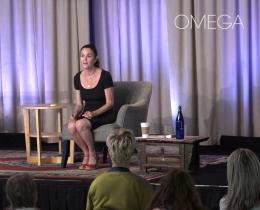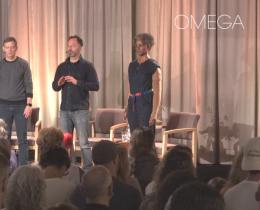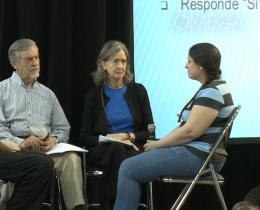Omega: Why do you think mindfulness has become so popular in the West?
Saki: In the West we’re very interested in the mind. We identify powerfully with our mind and our thoughts. Mindfulness helps us realize we have the capacity to know ourselves more directly, to step back and say, “Wait a second; the mind that I have thought about as the mind is only one small aspect of mind."
With mindfulness we realize the mind is actually capable of turning in on itself and witnessing, seeing, knowing. That's liberating because we begin to see the inaccuracies of the thinking process and of the ways we identify so powerfully as “me,” including the ways we defend ourselves. We see how this sense of ourselves creates more and more unhappiness. This ability to be dispassionate, to discover how the mind can really discern, is of enormous value because we’re not taught that in our educational process.
Omega: The practice of being a dispassionate witness can sometimes be interpreted as cold and distant, as kind of flatlining emotionally. Is there a warmer dimension to mindfulness?
Saki: This interesting, scientific, nondogmatic approach is great. You don't have to believe anything in advance, all you have to do is study the mind and your experience and let that be the data. But then there's another whole dimension to the practice—I call it the heart. To a lot of people that sounds sappy, but I don't mean it that way at all.
My experience is that the heart is fierce and completely independent because it doesn't ask for anything. It is capable of taking something in and holding it and giving it away. It's always capable of being bigger than we think. That, of course, has a lot to do with love and no one is diminished by offering love.
I think there's another whole dimension of human life that has to do with the awakening of something we call by many different words: sympathy, mercy, tenderness, compassion, kindness. It’s an innate warmth and goodness and deep acceptance that shows up as a sense of feeling and a sense of belongingness and a kind of intimacy and nearness that has not been transmitted so fully in the world of mindfulness.
Omega: How does mindfulness help us be more open to the difficult things in our life?
Saki: This is why the dimension of the heart is essential. As we soften and open, we can walk the path of love. On this path everything is taken in, nothing is turned aside. All the good, all the beautiful, all the bad, all the ugly, it's all here to be met, held, and known. This allows us to turn toward others and the suffering that surrounds us while still allowing us to see the beauty in the world. Even if our world is falling apart, it's also very beautiful. I’m extraordinarily grateful for teachers like Sharon Salzberg who have done so much to bring mindfulness with an emphasis on lovingkindness to the West.
Mindfulness also helps us liberate ourselves from any narrative we’re stuck in and see the beauty of the world. Whether the story is coming from outside (“Just trust us, this product/policy/procedure is going to make everything better,”) or from the inside (“You always say the wrong thing,”), it’s easy to get carried away by the emotions generated by these stories. Mindfulness helps us start to ascertain and see directly, not just theoretically, that there is something more in the world. I love it when people come back to an Mindfulness-Based Stress Reduction class and say, “Yesterday I saw the tree in my backyard for the first time!” The only thing different from the day before that was the way that person is seeing the world.
In mindfulness practice we accentuate certain values (openness, curiosity) and certain emotions (warmth, friendliness toward self and others), and we train for them. We cultivate them and become familiar with them as innate capacities. Not in a programmed way that says, “When you see this, you should do or feel this,” but in a way that offers people a means to touch their own humanness, to see the colors of life again.
Mindfulness is a process of remembering our connections. The currents and tides and waves of the world all collude in some way to keep us in a state of forgetfulness that leaves us with a small, narrow life. Mindfulness practice is like raising the shade. All of a sudden what's outside of the window shines in and we realize life is more than what’s happening to us. We realize, no matter what is happening, that life is beautiful.



